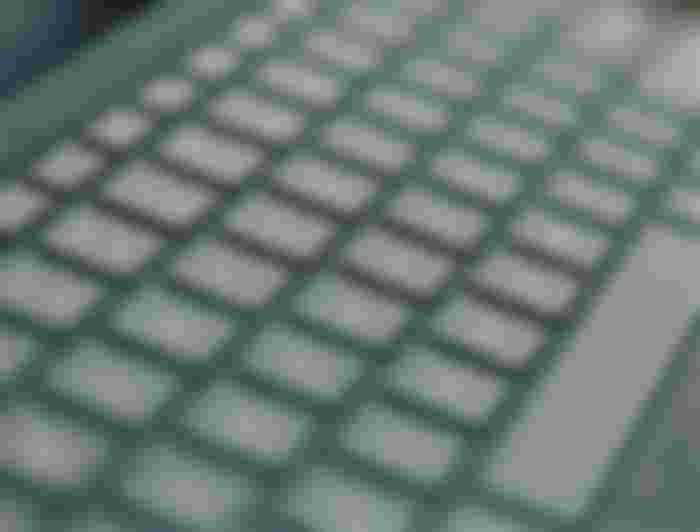
This is the QWERTY keyboard
While I know QWERTY may sound like the name of a Gen Z high school girl who bullies people on TikTok, it’s the name for the keyboard most of us use every day for things like checking Twitter, doing work, and checking Twitter at work.
Nobody knows where the name QWERTY comes from--we spent hours trying to research its origins and came up with nothing.
But here’s one thing we do know about the QWERTY keyboard: it’s causing Chinese people to forget how to write Chinese.
So basically, sometime in the 1900s, China figured out a way to fit their character-based writing system into the QWERTY keyboard, helping the country become the modern world power it is today: ranked first in population, second in the economy, and 36th alphabetically.
Okay, so to understand the ramifications of transferring Chinese dialects from handwritten to typed, we need to understand the difference between the English alphabet—the squiggles we use to do words and make talk—and Chinese characters.
So, allow me to explain. When writing in English, we use these 26 symbols to spell out sounds. For example, if I put the sounds associated with the letters B-U-M-F-U-Z-Z-L-E together, I get the word to bumfuzzle which I can then use to carry forward the idea of confusion.
Now if I remove the letters L and E, and their associated sounds, you get... well actually let’s skip over that, but you get the idea: there’s a very close connection with how you write an English word and how you say it.
In Chinese, on the other hand, how you write a word has nothing to do with how you pronounce it. Instead, each word is represented by a single character, or in some cases a combination of two or three.
Plus, because just about every word has its squiggly representative, the Chinese has more characters than an Avengers movie.
All this is to say, letters and characters work differently, and when it became popular to push buttons to make words, countries like China with character-based languages found themselves in a tough spot.
You see, by moving to type, writers of English only had to deal with 26 letters and a couple of dot things that I still don’t fully understand—like this one, which I’m told is a semicolon; something that I thought you had to have checked when you turned fifty.
If Chinese typists were to follow the same approach as their English-writing contemporaries though, they would have to figure out how to squeeze about two to three thousand separate keys on a typewriter or keyboard, and maybe even a few more if they too want to use a word like bumfuzzle in their script, but they don’t.
But sadly, they decided not to make an awesome giant keyboard that looks like something the Phantom of the Opera would play songs on.
Like me as I write this, and you as you type a heartfelt comment and a worthwhile video suggestion not related to bricks, Chinese typists have also come to use the QWERTY keyboard, which is possible, in large part, because of this guy:
Zhou Youguang, who, in the 1950s, invented what is called “pinyin,” which uses the Roman alphabet to phonetically spell out Chinese characters.
Anyways, to get it on my QWERTY keyboard I would phonetically spell it out. There’s no official phonetic spelling, so many options would work. I could type z-h-e-n, or z-j-e-n, z-j-e-y-n, or a bunch of other things, and the computer would be like “do you mean this'' and I would say “yes,” and then boom, I have the character for zhěn.
Essentially, it’s the Chinese equivalent of when you misspell “definitely” for the 500th consecutive time and autocorrect bails you out. But while Pinyin has made business better, reading commoner, writing faster, and memes danker, it has come with a troubling side effect—character amnesia.
Chinese people refer to this as “tíbǐwàngzì” which translates to, roughly, “pick up the pen but forget how to write the character,” and it’s a real problem with the youths.
You see, by embracing the digital revolution, adopting the QWERTY keyboard, and using pinyin to bridge the divide between alphabet and characters, younger Chinese folk can spell out the pronunciations of a word, but are forgetting how to write the character by hand, because remember, in Chinese, how you write a character has nothing to do with how you pronounce it.
In 2010, a China Youth Daily newspaper poll indicated that over 80% of those surveyed admitted to occasionally struggling to remember how to write the character they had in mind. For the prior generations who walked to their character writing lessons uphill both ways, it’s deeply troubling that a 3,000-year-oldmethod of communication deeply embedded within Chinese culture is slipping away because people wanted to use the clickety-clack machines.
But Chinese characters aren’t likely to disappear into varying-quality air overnight. Increased focus on handwritten characters in the education system, continued handwriting practices like journaling, and governmental mandates all have the potential to help protect the long-standing writing traditions of Chinese characters.
At the same time though, leaning into pinyin has been a key driver in China’s modernization and economic rise over the past half-century, and it’s not going anywhere anytime soon.
When it comes to balancing pinyin and traditional characters, Chinese folks are going to have to walk a thin tightrope, above a double-edged sword, between a rock and a hard place, and below a… uh… thing that has two bad outcomes.
Have you learned something? Thank you for reading if you made it in this part.
Update
We are currently making a video for our campaign to spread information about bitcoin cash.
Find Me
noise.cash/u/Kimmykira
Twitter: @Kimmykira96
Thank You For Your Support
-@realkimmy
Image Credit: unsplash
Special thanks to all of my supporters that keep supporting me. I will better and better every single day. I may have mistakes in my articles but i'm learning to correct them all.
